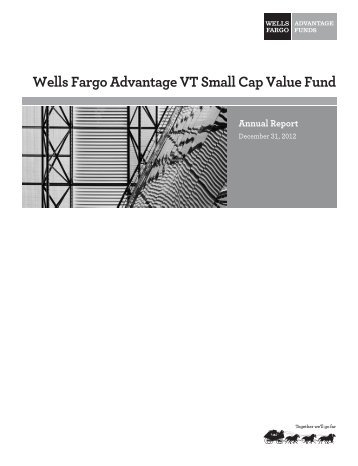Contents:

For this purpose, lenders should establish formal procedures appropriate to their banking book and trading book and commensurate with the risk profile of their exposures in securitised positions as stipulated in Clauses 65 to 67. Lenders may inter alia make use of the disclosures made by the originators in the form given in Annex 2 to monitor the securitisation exposures. Credit enhancement is the process of enhancing credit profile of a structured financial transaction through provision of additional security/financial support, for covering losses on securitised assets in adverse conditions. The enhancements can be broadly divided into two types viz. Internal credit enhancement and external credit enhancement. A credit enhancement which, for the investors, creates exposure to entities other than the underlying borrowers is called the external credit enhancement.

For residential mortgage-backed securitisations, at the time of first reset, at least 25% of the total principal amount assigned at the time of initiation of the securitisation transaction must have been amortised. The subsequent resets may be carried out at every 10% further amortisation of the pool principal. A minimum gap of six months should be maintained between successive resets. For all securitisations other than residential mortgage backed-securitisations, at the time of first reset, at least 50% of the total principal amount assigned at the time of initiation of the securitisation transaction must have been amortised.
The SPE and/or investors in the securitisation notes issued by the SPE have the clear right to select an alternative party to provide the facility subject to compliance of instructions in this direction. Provision of the facility should be structured in a manner to keep it distinct from other facilities and documented separately from any other facility provided by the facility provider. The nature, purpose, extent of the facility and all required standards of performance should be clearly specified in a written agreement to be executed at the time of originating the transaction and disclosed in the offer document. RBI would verify the preferential regulatory capital treatment assignments made by the lenders, including the originator, as part of the supervisory review.
Project Finance & Structuring SBU
Have you ever found yourself wondering “what are tranches? ” while exploring the financial markets? If so, you have come to the right place as this article seeks to bring forth the term tranche’s definition. Today, there exist several financial products available in the market which are often categorised keeping in mind certain characteristic traits such that investors and traders alike can select them with greater ease.
- The resulting risk weight is subject to a floor risk weight of 15%.
- The PIC takes control of all projects, intuitively determining priorities and allocating funds and resources accordingly.
- There should not be any recourse to the facility provider beyond the fixed contractual obligations.
- The buyer submits the report, asking the lender for the next instalment.
The originator must disclose to investors all necessary information at the transaction level to allow investors to determine whether the securitisation is STC-compliant. Based on the information provided by the originator, the investor must make its own assessment of the securitisation‘s STC compliance status before applying the alternative capital treatment. The 20% limit on total retained exposures will not be deemed to have been breached if it is exceeded due to amortisation of securitisation notes issued.
tranches meaningcifically, for exposures with long-term ratings, risk weights will be determined according to the following table and will be adjusted for tranche maturity and tranche thickness for non-senior tranches as prescribed in Clause 105 of these directions. The detachment point represents the threshold at which losses within the underlying pool result in a total loss of principal for the tranche in which a relevant securitisation exposure resides. Therefore, tranches are made to divide up the different mortgage profiles into slices which have monetary phrases appropriate for particular investors. The financial devices that may be damaged up into tranches embrace loans, bonds, mortgages, and insurance insurance policies. Tranches are usually used within the credit and debt markets in a process called securitization, which divides up various types of debt devices and packaged into funds to be bought to traders who wish to earn the rate of interest on the debt.
SBI Gold Loan
These categorizations can be understood to be tranches. They are segments that apply to a group of securities such as debt instruments which may be bonds or mortgages. They are then split according to the risk they face, the time they need to acquire maturity or in accordance with other characteristics that are marketable to a wide range of diverse investors. The yield paid by security is called the coupon rate.

This has both pros and cons. While it reduces the maturity risk, the risk of reinvestment rises owing to differential prepayment rates. This means the investor is confronted with the risk of reinvesting a larger share of his/her investment at a lower interest rate, which may not augur well for his/her portfolio. Government issues gold bonds for sales in portions and intervals. One such interval is called a tranche and a tranche is open for a maximum of 4-5 days.
Tranche V Issue Open for Subscription
Regardless of interest and maturity applicable to tranches, each tranche permits investors to customise investment strategies such that they are in line with specific investor needs. That being said, tranches aid banks as well as other financial institutions in drawing in investors belonging to varying profile types. On the contrary, when interest rates rise, mortgage borrowers tend to postpone their repayments. This increases the maturity of the MBS, and the holding period risk is enhanced.
Lenders also have to demonstrate that for making such an assessment they have implemented formal policies and procedures as appropriate. When the liquidity facility has been drawn the facility provider shall have a priority of claim over the future cash flows from the underlying assets, and thus will be senior to the senior tranche. At the time of reset, all the outstanding tranches of securitisation notes should be re-rated .
- These bonds that bring in resources to implement such climate-related projects are called Sovereign Green Bonds.
- Each particular mortgage pool has its own time to maturity, which factors into the risk and reward advantages.
- Each particular mortgage pool has its personal time to maturity, which components into the danger and reward advantages.
Provided further that in case of transfer of project loans, the MHP shall be calculated from the date of commencement of commercial operations of the project being financed. To increase the likelihood that those identified as having a fiduciary responsibility towards investors as well as the servicer execute their duties in full on a timely basis, remuneration should be such that these parties are incentivised and able to meet their responsibilities in full and on a timely basis. The party or parties with fiduciary responsibility to the securitisation and to investors should be able to demonstrate sufficient skills and resources to comply with their duties of care in the administration of the SPE. Policies, procedures and risk management controls should be well documented and adhere to good market practices and relevant regulatory regimes. There should be strong systems and reporting capabilities in place. In assessing whether “strong systems and reporting capabilities are in place” for capital purposes, well documented policies, procedures and risk management controls, as well as strong systems and reporting capabilities, may be substantiated by a third-party review.
Action may include modification to exposure ceilings to certain type of asset class underlying securitisation, modification to ceilings applicable to originators etc. An originator may underwrite only investment grade senior notes issued by the SPE. The holdings of securitisation notes devolved to the originator through underwriting would not attract provisions of Clause 25 provided they are sold to unrelated third parties within three-month period following the acquisition.
The contractual payments must be unconditional and must not be dependent on the actual performance of the securitised assets. If such unconditional contractual payment dates are not available, the final legal maturity shall be used. The securitisation notes issued by the SPE are not obligations of the originator.
Price of Bond will be fixed in Indian Rupees on the basis of simple average of closing price of gold of 999 purity published by the India Bullion and Jewellers Association Limited for the last 3 business days of the week preceding the subscription period. Sovereign gold bonds are available in the primary and secondary market. SGBs are issued by the Government of India but are managed and supervised by the Reserve Bank of India .
The assets underlying the securitisation should be homogeneous credit claims or receivables eligible under Part A of Chapter II. Credit claims or receivables should have contractually identified periodic payment streams relating to principal, interest, or principal and interest payments. Any referenced interest payments or discount rates should be based on an external benchmark. ERBA STC risk weights for short-term ratings External credit assessment A1+/A1 A2 A3 All other ratings Risk weight 10% 30% 60% 1250% 109. For exposures with long-term ratings, risk weights will be determined according to the following table and will be adjusted for tranche maturity, and tranche thickness for non-senior tranches according to Clause 105. 104.

Any deviation from the above settlement guidelines for any borrower should be made only by the Board of Directors. Wherever a suit is required to be filed against the defaulters, who have not come up for one time settlement, or where restructuring is not feasible, suits must be filed in all such cases by 31st October, 2000. Banks should follow up suit filed cases vigorously and effectively in the Courts to enable DRTs to decide the cases within 6 months as laid down in the DRT Act and realisation of dues completed at the earliest. A quarterly report in regard to outstanding of above Rs. 5.00 crore should also be sent to us.
The originator should not hold any share capital in the SPE. Provided that for commercial or residential real estate mortgages, MHP shall be counted from the date of full disbursement of the loan, or registration of security interest with Central Registry of Securitisation Asset Reconstruction and Security Interest of India , whichever is later. Based on the examination of the comments received, the Reserve Bank has issued the Master Direction – Reserve Bank of India Directions, 2021, which are enclosed.
The first reset of credit enhancement will not be permitted if the rating of any of the tranches has deteriorated vis-a-vis the original rating of these securitisation positions. Subsequent resets would not be permitted if the rating of any of the tranches has deteriorated vis-à-vis the rating at the time of previous reset. Investors should consider whether the originator, servicer and other parties with a fiduciary responsibility to the securitisation note holders have an established performance history for substantially similar credit claims or receivables to those being securitised and for an appropriately long period of time.
McFarlane Lake Announces Closing of First Tranche of Private Placement Offering – Yahoo Finance
McFarlane Lake Announces Closing of First Tranche of Private Placement Offering.
Posted: Fri, 17 Feb 2023 08:00:00 GMT [source]
While assets transferred to a securitisation will be subject to defined criteria as approved by the Board of the originator, the performance of the securitisation should not rely upon the ongoing selection of assets through active management on a discretionary basis of the securitisation’s underlying portfolio. The nature of assets should be such that investors would not need to analyse and assess materially different legal and/or credit risk factors and risk profiles when carrying out risk analysis and due diligence checks of each asset. 106. In the case of market risk hedges such as currency or interest rate swaps, the risk weight will be inferred from a securitisation exposure that is pari passu to the swaps or, if such an exposure does not exist, from the next subordinated tranche. To account for tranche maturity, lenders shall use linear interpolation between the risk weights for one and five years. The reset should not lead to exposures retained by originators along with credit enhancements offered by them falling below the level of MRR prescribed in Section B of Chapter II of these directions.
“No need to https://1investing.in/ cheques by investors while subscribing to IPO. Just write the bank account number and sign in the application form to authorise your bank to make payment in case of allotment. No worries for refund as the money remains in investor’s account.” The Finance Minister said today’s announcement is in continuation in the series of reforms. Soon after lockdown, we came up with Prime Minister Garib Kalyan Package .
0 Comments